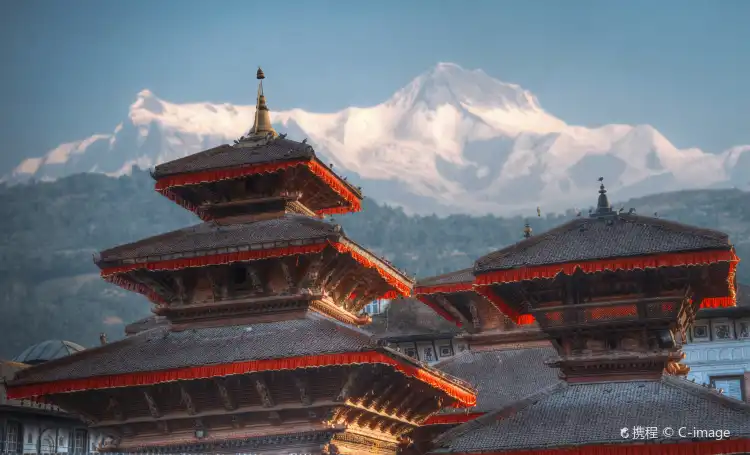
Search Your Kathmandu Hotels
Enter your dates for the latest hotel rates and availability.
Swipe up to view more
Filter by:
Hotel Star Rating
≤2345
Popular Filters
Amazing 4.5+Great 4.0+Good 3.5+Pleasant 3.0+845 hotels to stay in Kathmandu
Choose your travel dates to see the latest prices and deals.
Most Booked
Lowest Price
Closest to Downtown
Highest Rated



Hotel near Sinamangal,Kathmandu
神神光彩霞 2022.05.31
The service attitude is very good. I can speak a little Chinese. The breakfast is good. You can also add some egg rolls. The taste is good. The room is clean and very quiet. It is very close to the airport.
30 reviews
3.5/5
Price from
PHP 2,329
per night


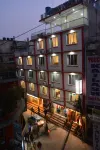
Hotel near Thamel,Kathmandu 100% of visitors choose this area
GGuest User 2022.04.27
I recently stayed at Hotel Serenity for one week and had a wonderful experience. The common space is very clean and well-maintained. The room was comfortable, had great wifi, hot water in the shower, a heating/cooling unit and TV/cable. The staff is exceptionally friendly, responsive and professional. The location is very convenient to many Thamel attractions, yet more quiet than other streets in the area. I would highly recommend Hotel Serenity for your next trip to KTM!
10 reviews
3.9/5
Price from
PHP 1,364
per night

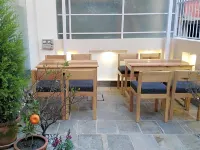

Hotel near Thamel,Kathmandu 100% of visitors choose this area
GGuest User 2024.05.25
”Mr. Roshan and his team at Lemon Tree Nepal provided the best service during my stay. I really enjoyed my time at the hotel. The staff was attentive and accommodating, ensuring that every aspect of my stay was comfortable and enjoyable. The facilities were clean and well-maintained, and the overall ambiance was welcoming. I would highly recommend Lemon Tree Nepal to anyone looking for a pleasant and memorable hotel experience.”
Excellent
58 reviews
4.3/5
Price from
PHP 1,172
per night

You Might Like
Hotels With BreakfastHotels With Twin RoomHotels With 1 Double BedHotels With Swimming PoolHotels With Free Cancellation

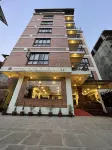
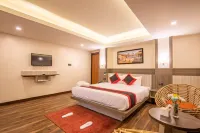
Hotel near Naxal,Kathmandu
GGuest User 2021.11.29
Really loved to stay at Wawa... Nice service and really appreciate their staff ... Over all beautiful ... Rooms are very excellent, food is good ...over all I give 5 stars to this hotel ...Hotel management is helpful in all respect ...request all atleast stay once in this hotel ...really will enjoy staying there ...my best wishes to WAWA staff and management...good luck and God bless
Very Good
26 reviews
4.2/5
Price from
PHP 1,332
per night

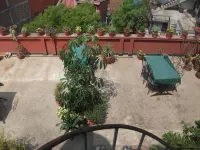

Hotel near Dhalko,Kathmandu
小小倩 2019.08.30
The location is good, you can find a lot of places to go from the small hotel. The facilities are average, but the air conditioning is quite good. This is a better place than the surrounding hotels. The hotels around the former are not air-conditioned. Health is really not good, and the quilt is dirty. But there is a advantage here, that is, every bed has a charging facility on the bed, which is convenient for us who want to charge the mobile phone, but also to charge mobile power and wifi. Breakfast is delivered to the room, this is also done better (remember to inform the store for breakfast half an hour in advance, the pace of local people doing things is relatively slow, this Chinese must adapt)
3 reviews
2.5/5
Price from
PHP 989
per night

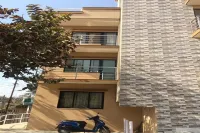

Hotel near Lazimpat,Kathmandu
With a stay at this apartment in Kathmandu (Lazimpat), you'll be within a 5-minute drive of Pashupatinath Temple and Ballys Casino. This apartment is 0.7 mi (1.2 km) from Garden of Dreams and 0.8 mi (1.3 km) from Durbar Marg.
Take in the views from a rooftop terrace and make use of amenities such as complimentary wireless internet access.
Featured amenities include a 24-hour front desk, luggage storage, and laundry facilities. A roundtrip airport shuttle is provided for a surcharge (available 24 hours), and free valet parking is available onsite.
Make yourself comfortable in this apartment, featuring a kitchen with a refrigerator and a microwave. There's a private balcony or patio. A flat-screen television with cable programming provides entertainment, while complimentary wireless internet access keeps you connected. Conveniences include a desk and a separate sitting area, and housekeeping is provided on a limited basis.
1.0/5
Price from
PHP 2,073
per night



Hotel near Thamel,Kathmandu 100% of visitors choose this area
MMAN 2018.02.13
Less than the domestic hotel conditions, next to Tamil Street, the conditions are very poor, there is breakfast, but there is no electricity, there is no way to charge, the quilt in the room is also very worn, from six in the morning has been noisy, no connection Machine service, in order to pick up the service, call to confirm before the plane, the phone is stopped, and finally no one picks up
Excellent
59 reviews
4.3/5
Price from
PHP 1,411
per night


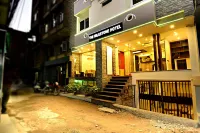
Hotel near Thamel,Kathmandu 100% of visitors choose this area
GGuest User 2023.12.06
The real joy of this hotel was the incredibly friendly and helpful reception staff. If you travel a lot after a while you can recognise the difference between a 'work' smile and a genuine smile. Here you get the genuine smile and it is immediately apparent the people here enjoy both their work, and making their guests stay as pleasant as possible. Thank you! The hotel itself is tucked away in the heart of Katmandu's bustling tourist district and offers a good continental breakfast. The rooms are modern, clean and comfortable, and I especially loved the ambient lighting options! In my opinion a very good option for a very good price, and I would definitely stay again.
Very Good
47 reviews
4.1/5
Price from
PHP 1,061
per night

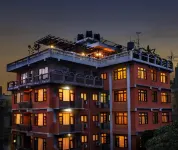

Hotel near Thamel,Kathmandu 100% of visitors choose this area
GGuest User 2023.05.10
Hotel Excelsior, right in the center of Kathmandu Tourist area. As in name ExcelSIOR it is Excellent place to to unwind and Plan your Trek into the mountains, valleys or even Pilgrimage. Managed by family friendly Staffs and knowledgeable of your needs. Rooms are clean with rooftop Restaurant and close to everything that a tourist needs. Room rates are reasonable, food clean and tasty. I will be more then happy to come back for future stay. The owner goes above & beyond to help when in need.
Excellent
21 reviews
4.5/5
Price from
PHP 1,890
per night
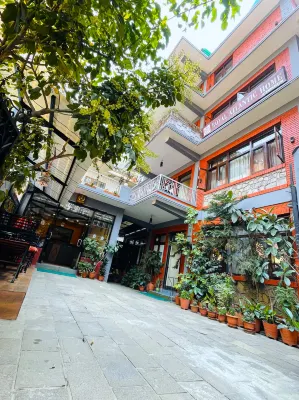
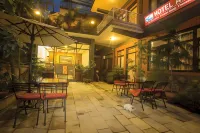
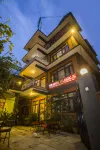
Hotel near Thamel,Kathmandu 100% of visitors choose this area
KKilian2069 2020.01.20
We stayed at Hotel Atlantic in December and had a very comfortable stay. The Location is very good because its in a more quiet place but still in Thamel. The Breakfast is also nice and freshly made. We booked a Trek with them and it was amazing. The Rooms are clean and there is hot water. Overall we had a really nice stay at the Hotel and would recommend it to anyone.
Excellent
42 reviews
4.3/5
Price from
PHP 989
per night

Top 20 Premium Hotels in Kathmandu
See all
Discover our curated selection of premium hotels in Kathmandu for your next stay

No.
1
4.4/5
76 reviewHotel Barahi Kathmandu
Hotel near Thamel, Kathmandu
"Friendly owner""Great rooms"
Select dates to view prices
No.
2
4.5/5
75 reviewFairfield by Marriott Kathmandu
Hotel near Thamel, Kathmandu
"Great location""Great stay!"
Select dates to view prices
No.
3
4.5/5
91 reviewHotel Mulberry
Hotel near Thamel, Kathmandu
"Good Location"
Select dates to view prices
No.
4
4.2/5
91 reviewHotel Shanker-Palatial Heritage Kathmandu
Hotel near Lazimpat, Kathmandu
"Great service"
Select dates to view prices
No.
5
4.5/5
30 reviewHotel Thrive, A Tropical Courtyard
Hotel near Dhobichaur, Kathmandu
"Good Location"
Select dates to view prices
No.
6
4.5/5
56 reviewRamada Encore by Wyndham Kathmandu Thamel
Hotel near Thamel, Kathmandu
"Great location""Great stay!"
Select dates to view prices
No.
7
4.2/5
15 reviewHotel Shambala
Hotel near Bansbari, Kathmandu
"Good Location"
Select dates to view prices
No.
8
4.7/5
41 reviewKathmandu Business Hotel
Hotel near Thamel, Kathmandu
"Good Location"
Select dates to view prices
No.
9
4.5/5
50 reviewHotel Ambassador by ACE Hotels
Hotel near Lainchaur, Kathmandu
"Clean and tidy""Friendly owner"
Select dates to view prices
No.
10
4.5/5
62 reviewNepali Ghar Hotel
Hotel near Thamel, Kathmandu
"Delicious breakfast"
Select dates to view pricesMost-booked Kathmandu hotels
See all
Check out these top-booked hotels from the past 30 days!
No.1
4.5/5
75 reviewFairfield by Marriott Kathmandu
Hotel near Thamel, Kathmandu 100% of visitors choose this area
"Great location""Great stay!"
Select dates to view pricesNo.2
4.0/5
39 reviewHotel Malati
Hotel near Sinamangal, Kathmandu
"Good Location"
Select dates to view pricesNo.3
4.6/5
343 reviewLakhey Hotel
Hotel near Kathmandu
"Quiet & comfortable""Great food"
Select dates to view pricesNo.4
4.5/5
14 reviewHilton Kathmandu
Hotel near Narayanhiti, Kathmandu
"Good Location"
Select dates to view pricesNo.5
4.5/5
16 reviewAirport Diana Hotel
Hotel near Sinamangal, Kathmandu
"Friendly owner""Close to airport"
Select dates to view pricesNo.6
4.6/5
55 reviewAloft Kathmandu Thamel
Hotel near Thamel, Kathmandu 100% of visitors choose this area
"Friendly owner""Delicious breakfast"
Select dates to view pricesNo.7
4.8/5
47 reviewHoliday Inn Express Kathmandu Naxal
Hotel near Tangal, Kathmandu
"Friendly owner""Great stay!"
Select dates to view pricesNo.8
4.7/5
101 reviewKathmandu Marriott Hotel
Hotel near Hattisar, Kathmandu
"Great stay!""Friendly owner"
Select dates to view pricesNo.9
4.5/5
11 reviewHotel Aashraya Home Pvt. Ltd.
Hotel near Thamel, Kathmandu 100% of visitors choose this area
"Good Location"
Select dates to view pricesNo.10
4.7/5
67 reviewKumari Boutique Hotel
Hotel near Thamel, Kathmandu 100% of visitors choose this area
"Friendly owner""Great location"
Select dates to view pricesBest Kathmandu hotels with breakfast
See all
Start your day with a tasty breakfast at one of our top hotels in Kathmandu.
Hyatt Regency Kathmandu
Hotel near Baudhatinchule
With a stay at Hyatt Regency Kathmandu in Kathmandu (Boudhha), you'll be within a 5-minute drive of Pashupatinath Temple and Boudhanath. This 5-star resort is 2.8 mi (4.5 km) from Durbar Marg and 4 mi (6.5 km) from Kathmandu Durbar Square.
Relax at the full-service spa, where you can enjoy massages, body treatments, and facials. After enjoying recreational amenities such as outdoor tennis courts and a health club, a lucky night at the casino is the perfect end to the day. This resort also features complimentary wireless Internet access, concierge services, and babysitting (surcharge). Guests can get to nearby shops on the complimentary shuttle.
Enjoy international cuisine at Sesame, one of the resort's 2 restaurants, or stay in and take advantage of the 24-hour room service. Snacks are also available at the coffee shop/cafe. Relax with your favorite drink at the bar/lounge or the poolside bar. Buffet breakfasts are available daily from 6:30 AM to 10:30 AM for a fee.
Featured amenities include complimentary wired Internet access, a 24-hour business center, and limo/town car service. Planning an event in Kathmandu? This resort has facilities measuring 17001 square feet (1580 square meters), including a conference center. A roundtrip airport shuttle is provided for a surcharge (available on request), and free self parking is available onsite.
Make yourself at home in one of the 280 guestrooms featuring minibars and LED televisions. Your pillowtop bed comes with premium bedding. Complimentary wired and wireless Internet access keeps you connected, and cable programming provides entertainment. Private bathrooms with separate bathtubs and showers feature deep soaking bathtubs and rainfall showerheads.
4.5/5
Excellent58 reviewPrice per night from:PHP 7,329
Hyatt Centric Soalteemode Kathmandu
Hotel near Kalimati, Kathmandu
Hyatt Place Kathmandu is the perfect starting point for work or play in Kathmandu. Relax after a busy day in our spacious guestrooms, rest up, then wake up and experience our Breakfast at the Zing Restaurant. Don’t be bound to a schedule; work out or get work done your way at our 24/7 Gym and e-room business centre. Our location makes it easy to get around the city with shopping, sightseeing and the business hubs of Kathmandu, all in the vicinity.Our Zing Sky Bar Lounge along with Outdoor Swimming Pool is under annual maintenance until further notice
4.6/5
Outstanding49 reviewPrice per night from:PHP 4,625
Baber Mahal Vilas - the Heritage Hotel
Hotel near Singha Durbar, Kathmandu
With a stay at Baber Mahal Vilas, you'll be centrally located in Kathmandu, within a 10-minute drive of Pashupatinath Temple and Dasarath Rangasala Stadium. This luxury hotel is 0.9 mi (1.5 km) from Kathmandu Civil Mall and 1.1 mi (1.7 km) from Jagannath Temple.
Pamper yourself with a visit to the spa, which offers massages, body treatments, and facials. You can take advantage of recreational amenities such as an outdoor pool, a sauna, and a 24-hour fitness center. This hotel also features complimentary wireless internet access, concierge services, and gift shops/newsstands.
Enjoy French cuisine at Chez Caroline, one of the hotel's 4 restaurants, or stay in and take advantage of the 24-hour room service. Relax with a refreshing drink at one of the 2 bars/lounges. Full breakfasts are available daily from 7:00 AM to 10:00 AM for a fee.
Featured amenities include complimentary newspapers in the lobby, dry cleaning/laundry services, and a 24-hour front desk. A roundtrip airport shuttle is provided for a surcharge (available 24 hours), and free self parking is available onsite.
Make yourself at home in one of the 33 guestrooms featuring minibars and flat-screen televisions. Your memory foam bed comes with premium bedding. Complimentary wireless internet access keeps you connected, and digital programming is available for your entertainment. Private bathrooms have complimentary toiletries and hair dryers.
4.6/5
Outstanding77 reviewPrice per night from:PHP 4,434
Hotel Yak & Yeti
Hotel near Narayanhiti, Kathmandu
With a stay at Hotel Yak & Yeti, you'll be centrally located in Kathmandu, within a 5-minute drive of Pashupatinath Temple and Durbar Marg. This 5-star hotel is 1.2 mi (1.9 km) from Kathmandu Durbar Square and 3.4 mi (5.5 km) from Boudhanath.
Pamper yourself with a visit to the spa, which offers massages. You're sure to appreciate the recreational amenities, which include 2 spa tubs, outdoor tennis courts, and a health club. Additional features at this Art Deco hotel include wireless Internet access (surcharge), concierge services, and babysitting (surcharge).
Grab a bite at The Chimney, one of the hotel's 2 restaurants, or stay in and take advantage of the 24-hour room service. Snacks are also available at the coffee shop/cafe. Wrap up your day with a drink at the bar/lounge. Buffet breakfasts are available daily from 6:30 AM to 10:30 AM for a fee.
Featured amenities include a business center, express check-in, and express check-out. Planning an event in Kathmandu? This hotel has facilities measuring 8504 square feet (790 square meters), including a conference center. A roundtrip airport shuttle is provided for a surcharge (available 24 hours), and free valet parking is available onsite.
Make yourself at home in one of the 270 guestrooms featuring refrigerators and minibars. Wireless Internet access (surcharge) keeps you connected, and cable programming is available for your entertainment. Private bathrooms with bathtubs or showers feature complimentary toiletries and hair dryers. Conveniences include phones, as well as safes and desks.
4.1/5
Very Good67 reviewPrice per night from:PHP 6,220
The Dwarika's Hotel
Hotel near Battisputali, Kathmandu
A stay at The Dwarika's Hotel places you in the heart of Kathmandu, within a 15-minute walk of Pashupatinath Temple and Royal Nepal Golf Course. This luxury hotel is 0.8 mi (1.2 km) from Charumati Stupa and 1.2 mi (1.9 km) from Guhyeshwari Temple.
Pamper yourself with a visit to the spa, which offers massages, body treatments, and facials. If you're looking for recreational opportunities, you'll find an outdoor pool, a sauna, and a fitness center. Additional features at this hotel include complimentary wireless internet access, concierge services, and babysitting (surcharge).
Enjoy local cuisine at Krishnarpan, one of the hotel's 3 restaurants, or stay in and take advantage of the 24-hour room service. Snacks are also available at the coffee shop/cafe. Wrap up your day with a drink at the bar/lounge. Buffet breakfasts are available daily from 6:30 AM to 10:00 AM for a fee.
Featured amenities include complimentary wired internet access, a business center, and express check-in. Event facilities at this hotel consist of a conference center and a meeting room. A roundtrip airport shuttle is provided for a surcharge (available 24 hours), and free self parking is available onsite.
Make yourself at home in one of the 86 air-conditioned rooms featuring minibars. Complimentary wireless internet access keeps you connected, and cable programming is available for your entertainment. Private bathrooms with shower/tub combinations feature hair dryers and bathrobes. Conveniences include safes and desks, and housekeeping is provided daily.
4.8/5
Outstanding42 reviewPrice per night from:PHP 19,155
Dusit Princess Kathmandu
Hotel near Lazimpat, Kathmandu
Comfort value and convenience will define your stay with warm Thai and Nepalese hospitality woven into every moment Conveniently located in upmarket Lazimpat the hotel has international restaurants and Narayanhiti Palace Museum on its doorstep Retreat from the buzz of the city on your doorstep into a world of wellness dynamic restaurants and relaxation. Must sees like Kathmandu Durbar Square Boudhanath are just in short drive away
4.8/5
Outstanding69 reviewPrice per night from:PHP 5,032
Radisson Hotel Kathmandu
Hotel near Lazimpat, Kathmandu
Radisson Hotel Kathmandu is an elegant Hotel located at Lazimpat, a prime city -center and features 260 spacious rooms with exceptional amenities. Conveniently nestled in the diplomatic proximity within easy walking distance to the famous tourist spots like Durbar Marg and Thamel, this modern hotel complements discerning travelers with a comfortable stay and personalized service. 13;10;Conference and Banquet facilities provide perfect solution for meetings, workshops or a chance to celebrate a special moment. The business center facilitated with modern equipments offers full secretarial services to the guests.13;10;The Fitness Center with latest life fitness equipments and a rooftop swimming pool is a perfect area to relax and rejuvenate after a day long busy schedule. Steam, Sauna, Jacuzzi and rejuvenating massages pamper your senses. The beauty parlor and barber shop deliver professional services to the patrons by helping them look and feel better.13;10;The hotel offers the finest food and beverage outlets serving international cuisine. Terrace Garden overlooking the pool provides panoramic view of the valley and the surrounding mountains. 13;10;13;10;13;10;13;10;Some of the important features of the hotel:9;13;10;1. 25 minutes away from International Airport by car.13;10;2. 10 minutes away from the famous tourist spot Thamel by walk.13;10;3. 260 well equipped modern rooms with minibar, in-room personal safe deposit, hair13;10; dryer, tea/coffee maker, iron amp; ironing board etc.13;10;4. Amazing inhouse Pastry and Confectionary shop along with Lobby Bar13;10;5. Four restaurants - The Fun Cafe (TFC), The Coffee Shop, Terrace Garden and Olive Garden.13;10;6. Free High Speed WiFi Internet Access for inhouse guest.13;10;7. Travel Desk 13;10;8. Wheel Chair access / Handicap rooms.13;10;9. 24 hour room service.13;10;10. Casino Rad with 24 hour gaming and entertainment facilities.13;10;
4.0/5
Very Good41 reviewPrice per night from:PHP 4,657
The Everest Hotel
Hotel near New Baneshwor, Kathmandu
With a stay at The Everest Hotel Kathmandu in Kathmandu (New Baneshwor), you'll be within a 5-minute drive of Pashupatinath Temple and Bhadrakali Temple. This luxury hotel is 1.5 mi (2.4 km) from Kumbeshwar Temple and 1.5 mi (2.5 km) from Banglamukhi Temple.
Be sure to enjoy recreational amenities including an outdoor pool and a fitness center. This hotel also features complimentary wireless internet access, concierge services, and gift shops/newsstands.
Enjoy Chinese cuisine at PAN ASIAN, a fine-dining restaurant which features a bar/lounge, or stay in and take advantage of the 24-hour room service. Wrap up your day with a drink at the poolside bar. Continental breakfasts are available daily from 7:00 AM to 10:00 AM for a fee.
Featured amenities include express check-in, complimentary newspapers in the lobby, and dry cleaning/laundry services. Free valet parking is available onsite.
Treat yourself to a stay in one of the 160 individually decorated guestrooms, featuring fireplaces and heated floors. 40-inch LED televisions with cable programming provide entertainment, while complimentary wireless internet access keeps you connected. Conveniences include safes and desks, and housekeeping is provided daily.
4.2/5
Very Good64 reviewPrice per night from:PHP 3,413
Mandala Norling Lords Prime
Hotel near Bansbari, Kathmandu
With a stay at Mandala Norling in Kathmandu, you'll be within a 5-minute drive of Pashupatinath Temple and Charumati Stupa. This hotel is 2.2 mi (3.5 km) from Gorakhnath Temple and 2.3 mi (3.7 km) from Kopan Monastery.
Free self parking is available onsite.
Make yourself at home in one of the 50 guestrooms. Complimentary wireless internet access is available to keep you connected.
0.0/5
Price per night from:PHP 2,010
Basera Boutique Hotel
Hotel near Singha Durbar, Kathmandu
In the heart of Kathmandu, Basera Boutique Hotel is within a 5-minute drive of Garden of Dreams and Patan Durbar Square. This spa hotel is 1.8 mi (3 km) from Kathmandu Durbar Square and 2.7 mi (4.3 km) from Pashupatinath Temple.
Pamper yourself with a visit to the spa, which offers massages, body treatments, and facials. If you're looking for recreational opportunities, you'll find an outdoor pool, a sauna, and bicycles to rent. This hotel also features complimentary wireless internet access, concierge services, and a banquet hall.
Enjoy a meal at the restaurant or snacks in the coffee shop/cafe. The hotel also offers 24-hour room service. Wrap up your day with a drink at the bar/lounge. Buffet breakfasts are available daily from 6:30 AM to 10:30 AM for a fee.
Featured amenities include a business center, dry cleaning/laundry services, and a 24-hour front desk. Planning an event in Kathmandu? This hotel has 1000 square feet (93 square meters) of space consisting of a conference center and 2 meeting rooms. A shuttle from the airport to the hotel is complimentary (available 24 hours).
Make yourself at home in one of the 60 air-conditioned rooms featuring minibars and LED televisions. Complimentary wireless internet access keeps you connected, and cable programming is available for your entertainment. Private bathrooms with shower/tub combinations feature jetted bathtubs and complimentary toiletries. Conveniences include safes and desks, and housekeeping is provided daily.
4.7/5
Outstanding59 reviewPrice per night from:PHP 5,072
Find best four-star Kathmandu hotels
See all
For business or leisure, these four-star hotels in Kathmandu provide the perfect stay for your journey.
DOM Himalaya Hotel
Hotel near Chhetrapati, Kathmandu
With a stay at DOM Himalaya Hotel in Kathmandu (Thamel), you'll be within a 10-minute drive of Pashupatinath Temple and Nara Devi Temple. This 4-star hotel is 0.7 mi (1.1 km) from Kathmandu Durbar Square and 0.9 mi (1.5 km) from Durbar Marg.
Take advantage of recreation opportunities such as bicycles to rent or take in the view from a rooftop terrace and a garden. This Victorian hotel also features complimentary wireless Internet access, concierge services, and babysitting (surcharge). Getting to nearby attractions is a breeze with the area shuttle (surcharge).
Enjoy a meal at the restaurant or snacks in the coffee shop/cafe. The hotel also offers 24-hour room service. Relax with a refreshing drink at one of the 2 bars/lounges.
Featured amenities include express check-in, express check-out, and dry cleaning/laundry services. A shuttle from the airport to the hotel is complimentary (available on request).
Make yourself at home in one of the 37 air-conditioned rooms featuring flat-screen televisions. Complimentary wireless Internet access keeps you connected, and cable programming is available for your entertainment. Private bathrooms with showers feature rainfall showerheads and complimentary toiletries. Conveniences include phones, as well as safes and desks.
4.4/5
Excellent109 reviewPrice per night from:PHP 1,499
Hotel Crowne Imperial
Hotel near Kuleshwor, Kathmandu
A stay at Hotel Crowne Imperial places you in the heart of Kathmandu, a 4-minute drive from Kathmandu Durbar Square and 5 minutes from Swayambhunath. This spa hotel is 2.7 mi (4.3 km) from Garden of Dreams and 2.7 mi (4.3 km) from Durbar Marg.
Pamper yourself with a visit to the spa, which offers massages, body treatments, and facials. You're sure to appreciate the recreational amenities, including a health club, an outdoor pool, and a sauna. Additional amenities at this hotel include complimentary wireless internet access and concierge services.
Grab a bite to eat at one of the hotel's 2 restaurants, or stay in and take advantage of the 24-hour room service. Snacks are also available at the coffee shop/cafe. Relax with a refreshing drink at one of the 2 bars/lounges. Buffet breakfasts are available daily from 6:30 AM to 10:00 AM for a fee.
Featured amenities include express check-out, dry cleaning/laundry services, and a 24-hour front desk. Planning an event in Kathmandu? This hotel has 3500 square feet (325 square meters) of space consisting of a conference center and 4 meeting rooms. A roundtrip airport shuttle is provided for a surcharge (available on request), and free valet parking is available onsite.
Make yourself at home in one of the 131 individually decorated guestrooms, featuring minibars and Smart televisions. Complimentary wired and wireless internet access keeps you connected, and digital programming provides entertainment. Bathrooms feature bathtubs or showers with rainfall showerheads and hair dryers. Conveniences include phones, as well as laptop-compatible safes and desks.
4.5/5
Excellent54 reviewPrice per night from:PHP 1,770
Hotel Shanker-Palatial Heritage Kathmandu
Hotel near Lazimpat, Kathmandu
With a stay at Hotel Shanker, you'll be centrally located in Kathmandu, within a 10-minute drive of Pashupatinath Temple and Garden of Dreams. This 4-star hotel is 0.7 mi (1.1 km) from Durbar Marg and 1.7 mi (2.8 km) from Kathmandu Durbar Square.
Relax at the full-service spa, where you can enjoy massages, body treatments, and facials. If you're looking for recreational opportunities, you'll find an outdoor pool, a steam room, and a fitness center. This Victorian hotel also features complimentary wireless Internet access, concierge services, and babysitting (surcharge).
Grab a bite at Cozy Kailash, one of the hotel's 2 restaurants, or stay in and take advantage of the 24-hour room service. Snacks are also available at the coffee shop/cafe. Relax with a refreshing drink from the poolside bar or one of the 2 bars/lounges. Buffet breakfasts are available daily from 6:30 AM to 10:30 AM for a fee.
Featured amenities include a 24-hour business center, limo/town car service, and complimentary newspapers in the lobby. Planning an event in Kathmandu? This hotel has facilities measuring 4558 square feet (423 square meters), including a conference center. A roundtrip airport shuttle is provided for a surcharge (available 24 hours), and free self parking is available onsite.
Make yourself at home in one of the 94 individually decorated guestrooms, featuring refrigerators and minibars. 24-inch LCD televisions with cable programming provide entertainment, while complimentary wireless Internet access keeps you connected. Private bathrooms with bathtubs or showers feature complimentary toiletries and hair dryers. Conveniences include phones, as well as laptop-compatible safes and desks.
4.2/5
Very Good91 reviewPrice per night from:PHP 3,317
Kantipur Village Kathmandu
Hotel near Thamel, Kathmandu 100% of visitors choose this area
With a stay at Kantipur Village, you'll be centrally located in Kathmandu, within a 10-minute drive of Pashupatinath Temple and Kathesimbhu Stupa. This hotel is 0.3 mi (0.5 km) from Temples of the Elements and 0.3 mi (0.5 km) from Three Goddesses Temples.
Pamper yourself with onsite massages or enjoy recreation amenities such as a steam room. Additional features at this hotel include complimentary wireless internet access, a hair salon, and tour/ticket assistance.
Enjoy a meal at the restaurant or snacks in the coffee shop/cafe. The hotel also offers room service (during limited hours). Wrap up your day with a drink at the bar/lounge. Buffet breakfasts are available daily from 6:30 AM to 10:30 AM for a fee.
Featured amenities include a 24-hour front desk, luggage storage, and a safe deposit box at the front desk. A shuttle from the airport to the hotel is provided for a surcharge (available 24 hours), and free self parking is available onsite.
Make yourself at home in one of the 47 guestrooms featuring minibars and LED televisions. Complimentary wireless internet access keeps you connected, and satellite programming is available for your entertainment. Bathrooms feature showers with rainfall showerheads and complimentary toiletries. Conveniences include desks and coffee/tea makers, and housekeeping is provided daily.
4.7/5
Outstanding46 reviewPrice per night from:PHP 2,512
Himalayan Suite Hotel
Hotel near Kathmandu
With a stay at Himalayan Suite Hotel in Kathmandu, you'll be within a 10-minute drive of Pashupatinath Temple and Ballys Casino. This spa hotel is 0.7 mi (1.1 km) from Temples of the Elements and 1 mi (1.6 km) from Kathesimbhu Stupa.
Pamper yourself with a visit to the spa, which offers massages, body treatments, and facials. This Art Deco hotel also features complimentary wireless internet access, a fireplace in the lobby, and tour/ticket assistance.
You can enjoy a meal at the restaurant serving the guests of Himalayan Suite Hotel, or stop in at the snack bar/deli. Mingle with other guests at the complimentary reception, held daily. Wrap up your day with a drink at the bar/lounge. A complimentary full breakfast is served daily from 7:30 AM to 10:30 AM.
Featured amenities include dry cleaning/laundry services, a 24-hour front desk, and luggage storage. Guests may use a roundtrip airport shuttle for a surcharge, and free self parking is available onsite.
Make yourself at home in one of the 27 air-conditioned rooms featuring minibars and LED televisions. Complimentary wireless internet access keeps you connected, and satellite programming is available for your entertainment. Bathrooms feature showers, bathrobes, and slippers. Conveniences include complimentary bottled water and blackout drapes/curtains, as well as phones with free local calls.
3.9/5
68 reviewPrice per night from:PHP 1,340
Nirvana Boutique Hotel
Hotel near Thamel, Kathmandu 100% of visitors choose this area
A stay at Nirvana Boutique Hotel places you in the heart of Kathmandu, a 2-minute drive from Kathmandu Durbar Square and 11 minutes from Budhanilkantha Temple. This hotel is 8.8 mi (14.1 km) from Chandragiri Cable Car Bottom Station and 10.3 mi (16.5 km) from Bhaktapur Durbar Square.
Take in the views from a rooftop terrace and a garden and make use of amenities such as complimentary wireless internet access. Additional amenities at this hotel include wedding services, a television in a common area, and tour/ticket assistance.
At Nirvana Boutique Hotel, enjoy a satisfying meal at the restaurant. Mingle with other guests at the complimentary reception, held daily. Quench your thirst with your favorite drink at the bar/lounge. A complimentary buffet breakfast is served daily from 7:00 AM to 10:00 AM.
Featured amenities include a business center, dry cleaning/laundry services, and a 24-hour front desk. A shuttle from the airport to the hotel is complimentary (available on request).
Make yourself at home in one of the 45 air-conditioned rooms featuring flat-screen televisions. Complimentary wireless internet access keeps you connected, and cable programming is available for your entertainment. Private bathrooms with showers feature rainfall showerheads and complimentary toiletries. Conveniences include desks and coffee/tea makers, and housekeeping is provided daily.
4.3/5
Excellent113 reviewPrice per night from:PHP 1,340
Hotel Barahi Kathmandu
Hotel near Thamel, Kathmandu 100% of visitors choose this area
With a stay at Hotel Barahi Kathmandu, you'll be centrally located in Kathmandu, within a 5-minute drive of Pashupatinath Temple and Garden of Dreams. This hotel is 0.1 mi (0.1 km) from Three Goddesses Temples and 0.2 mi (0.3 km) from Narayanhity Palace Museum.
Enjoy recreation amenities such as an outdoor pool or take in the view from a garden. This hotel also features complimentary wireless internet access, concierge services, and a banquet hall.
Enjoy a meal at the restaurant or snacks in the coffee shop/cafe. The hotel also offers 24-hour room service. Unwind at the end of the day with a drink at the bar/lounge or the poolside bar. A complimentary buffet breakfast is served daily from 7:30 AM to 10:00 AM.
Featured amenities include dry cleaning/laundry services, a 24-hour front desk, and laundry facilities. Planning an event in Kathmandu? This hotel has 1585 square feet (147 square meters) of space consisting of conference space and 2 meeting rooms. A roundtrip airport shuttle is provided for a surcharge (available 24 hours), and free valet parking is available onsite.
Make yourself at home in one of the 80 air-conditioned rooms featuring minibars and LED televisions. Your room comes with a pillowtop bed. Complimentary wireless internet access keeps you connected, and satellite programming is available for your entertainment. Private bathrooms with showers feature rainfall showerheads and complimentary toiletries.
4.4/5
Excellent76 reviewPrice per night from:PHP 4,466
Skye Inn Kathmandu
Hotel near Thamel, Kathmandu 100% of visitors choose this area
With a stay at Skye Inn Kathmandu, you'll be centrally located in Kathmandu, within a 10-minute drive of Pashupatinath Temple and Ballys Casino. This hotel is 0.4 mi (0.6 km) from Three Goddesses Temples and 0.4 mi (0.6 km) from Temples of the Elements.
Take in the views from a garden and make use of amenities such as complimentary wireless internet access and concierge services. Additional features at this hotel include gift shops/newsstands, a hair salon, and wedding services.
Enjoy a meal at the restaurant or snacks in the hotel's coffee shop/cafe. Quench your thirst with your favorite drink at the bar/lounge. A complimentary buffet breakfast is served daily from 6:30 AM to 10:30 AM.
Featured amenities include a computer station, complimentary newspapers in the lobby, and a 24-hour front desk. A shuttle from the airport to the hotel is complimentary (available 24 hours).
Make yourself at home in one of the 41 air-conditioned rooms featuring minibars and Smart televisions. Complimentary wireless internet access keeps you connected, and cable programming is available for your entertainment. Private bathrooms with showers feature complimentary toiletries and hair dryers. Conveniences include desks and complimentary newspapers, and housekeeping is provided daily.
4.5/5
Excellent14 reviewPrice per night from:PHP 2,145
Hotel Crystal Pashupati
Hotel near Battisputali, Kathmandu
Discover the perfect blend of comfort and convenience at Hotel Crystal Pashupati, ideally located just a 5-minute walk from the iconic Pashupatinath Temple and less than 1 km from Tribhuvan International Airport. Our modern facilities are designed to cater to your every need, ensuring a relaxing and enjoyable stay.
Our guests can enjoy free private parking and complimentary Wi-Fi throughout the property. The hotel features an in-house restaurant and bar, offering a delightful dining experience. We provide a 24-hour front desk, room service, and laundry facilities to make your stay as convenient as possible.
Each of our guest rooms is equipped with air conditioning, a flat-screen TV, a kettle, a shower, free toiletries, and a hairdryer. Start your day with a delicious breakfast, with options including a buffet, à la carte, or continental breakfast.
For those looking to explore, the Boudhanath Stupa is just 2.9 km away, and Thamel is 4.1 km from the property. Whether you're here for business or leisure, Hotel Crystal Pashupati is your ideal choice for a comfortable and memorable stay.
4.5/5
Excellent42 reviewPrice per night from:PHP 2,129
Hotel Thrive, A Tropical Courtyard
Hotel near Dhobichaur, Kathmandu
You'll be centrally located in Kathmandu with a stay at Hotel Thrive, A Tropical Courtyard, within a 15-minute walk of Garden of Dreams and Kathmandu Durbar Square. This spa hotel is 0.9 mi (1.5 km) from Durbar Marg and 1.2 mi (2 km) from Swayambhunath.
Relax at the full-service spa, where you can enjoy massages.
Enjoy a satisfying meal at Palm & Potions serving guests of Hotel Thrive, A Tropical Courtyard. Wrap up your day with a drink at the bar/lounge. To-go breakfasts are available daily from 6:00 AM to 10:00 AM for a fee.
Featured amenities include dry cleaning/laundry services, a 24-hour front desk, and luggage storage. A roundtrip airport shuttle is provided for a surcharge (available on request), and free self parking is available onsite.
Make yourself at home in one of the 42 air-conditioned rooms featuring minibars and LED televisions. Complimentary wireless internet access keeps you connected, and cable programming is available for your entertainment. Bathrooms have hair dryers and slippers. Conveniences include desks and electric kettles, as well as phones with free local calls.
4.5/5
Excellent30 reviewPrice per night from:PHP 2,967
Read reviews of guests who stayed at Kathmandu hotels
See all
Browse these genuine traveler ratings & reviews to find your perfect stay.
4.7/5
Outstanding
SSteve14Wonderful experience, great location and professional staff
The Magnificent Hotel is an outstanding value for money. It is in great location, within walking distance of Asan Bazar, Durbar Square and the lively streets in the Thamel district. The hotel is on a safe street with restaurants, grocery store and even security agents. The hotel is clean and in good condition. The restaurant has both indoor and outdoor seating. The outdoor seating is comfortable, relaxing and breezing. The rooms are clean and comfortable. All communication for reservations or special request was perfect. However, what truly made the difference was the professional and caring staff. All were helpful, spoke multiple languages and proactive in providing help. One example is Kritika, who was absolutely exceptional, with a consistent positive attitude. She helped to explain the local riding sharing App inDrive. She helped me with the local cellphone provider Ncell. Help arranged laundry service and other useful information. Also Rajesh, the bar man was helpful to suggest local dishes. More importantly he was kind and interesting to discuss with. Finally, Ganga the manager was absolutely exceptional to ensure all was well organized and inspiring his staff. I had the occasion to speak with him many times and it was very enjoyable. We stayed in a Deluxe Family Suite room with two separate rooms, good air conditioning and shower and comfortable bed. Highly recommended
Magnificent Hotel
Hotel near Thamel, Kathmandu 100% of visitors choose this area
Price per night from:PHP 1,260
4.6/5
Outstanding
GGuest UserWe had the pleasure of staying at this exceptional hotel for a total of 6 nights, and we couldn't be more thrilled with our experience. From the moment we arrived, the staff displayed an authentic and warm hospitality that made us feel truly at home. Their genuine friendliness and willingness to assist with every request went above and beyond our expectations.
One of the highlights of our stay was the remarkable cleanliness and tranquility of our room. It was evident that great care was taken to ensure a pristine environment, allowing us to relax and unwind in utmost comfort. The icing on the cake was the superb internet reception, which allowed us to stay connected seamlessly throughout our stay.
Our stay was punctuated by delightful mornings indulging in an exquisite breakfast spread. The puri or chapati and curry quickly became our favorites, perfectly complemented by the aromatic masala tea and the flavorful masala omelette – a true culinary delight!
The hotel's al fresco dining experience was an absolute treat. The ambiance was charming, and the food left an indelible mark on our taste buds. With each meal, we explored a plethora of different dishes, each more tantalizing than the last. It's safe to say that the culinary offerings exceeded our expectations in every way.
A noteworthy mention is the hotel's convenient proximity to Boudha Stupa, a mere 10-minute walk away. This made our visits to the stupa incredibly convenient and allowed us to fully immerse ourselves in its serene atmosphere.
What sets this hotel apart is not only its remarkable amenities and services but also the unique opportunity it offers. The daily free yoga and meditation sessions held within the monastery on the premises are truly transformative. We highly recommend inquiring about the schedule from the attentive hotel staff – it's an experience that added immeasurable value to our stay.
In summary, our time at this hotel was nothing short of exceptional. The combination of attentive staff, immaculate rooms, delectable cuisine, and the added touch of free yoga and meditation sessions make this hotel a standout choice for anyone seeking a memorable stay near Boudha Stupa. We wholeheartedly recommend this establishment to fellow travelers looking for an unforgettable experience.
Thank you to the entire staff for making our stay truly remarkable – we eagerly anticipate the opportunity to return!
Tip: Indulge in delightful puri & curry breakfast, relish al fresco dining, rejuvenate with free daily yoga. A tranquil oasis near Boudha Stupa.
4.6/5
Outstanding
DDHOThis hotel is really warm and the owner is also very nice. The owner will care about your plans every day. The rooftop dining view is very good. The breakfast standard is 20 at any rate. I booked it online for more than 100, and I booked it again and told the boss directly that it would be more than 70 and no taxes would be paid. I couldn't find the bus station when I went to Pokhara. The boss took me there. It was great. There are too many things to climb the mountain, so they are stored in his house. Get it when you come back. The perfect experience. Super recommended
4.5/5
Excellent
GGuest UserThe hotel is an ideal location near to where the main bars and restaurants of Kathmandu are. The owner couldn’t do enough for us. Making sure anything we needed was catered for. Breakfast was delicious and a lovely upgrade was very well received. Would happily come back the next time we visit Nepal
Oasis Kathmandu Hotel
Hotel near Thamel, Kathmandu 100% of visitors choose this area
Price per night from:PHP 1,754
4.5/5
Excellent
GGuest UserThe location is on the edge of the pedestrian street in Thamel District, close to the pedestrian street, and very quiet. However, the entrance is a bit shabby. There are many European and American guests staying. The breakfast is a combination of Indian and Western styles. There is an outdoor dining area where you can smoke. The front desk is a bit small and not atmospheric. The hotel is listed as a four-star hotel. The hotel's service staff have very good attitudes and have no problem communicating in English at the front desk.
Ramada Encore by Wyndham Kathmandu Thamel
Hotel near Thamel, Kathmandu 100% of visitors choose this area
Price per night from:PHP 3,860
4.5/5
Excellent
GGuest UserMy wife and I stayed for one night on March 31st. All the staff are friendly and made our stay enjoyable. We ordered several dishes at the attached restaurant and were completely satisfied with every dish. It took a few minutes for the shower hot water to come out, but the staff explained the details in advance so we could enjoy the hot water without worrying. We recommend this hotel.
Hotel Yala Peak
Hotel near Thamel, Kathmandu 100% of visitors choose this area
Price per night from:PHP 407
4.4/5
Excellent
AAnonymous UserThe location is perfect, right at the heart of the city. The view is great, too.
The staff are amazing: Bibek informed me about everything I asked, from means of transport to some specialties. I didn't have a kettle in the room, and he got me one.
The breakfast was nice, although served only starting from 11 am (which is a bit late to my taste).
The biggest issue is hot water that is warm, but i guess that's the case pretty much everywhere in Nepal. There's an AC, a bar of soap, a toothpaste and a toothbrush, a towel, two chairs, but no desk.
4.3/5
Excellent
GGuest UserThe Kathmandu Guest House is one of the oldest in the Thamel area, with several additions having been added to the first original building. I first stayed at the KGH quite a few years ago, before it was upgraded, with new buildings, a lovely large garden area, a museum, and several shops including an art house; significantly higher prices reflected the upgrade. It is now part of the KGH Group of hotels. It is centrally located in Thamel and offers the usual desk services, such as tour booking. Free airport pickup on arrival is available for international flights, with 48 hr pre-notification. There are 4 basic room prices (in addition to suites and a family room), for the different annexes - Standard, Garden Facing, Deluxe and Superior, with and without breakfast option. The very good breakfast is $15 if ordered separately, and about half that if included in the room price. On this trip, I stayed at different times in the Standard and the Garden Facing rooms. My friend had stayed in the Deluxe room. The beds and pillows are very comfortable in all the rooms. A hot water pot, with coffee/tea, is in each room. The best value is the Garden Facing room. The Deluxe is almost double the price, and from what I saw, primarily has a bigger garden window and a glass enclosure for the shower. The Superior room, located in the newest annex, is even more costly. My Garden Facing room had a good view, but the toilet/shower had a tub with no shower door or even a curtain, so water splashed from the tub over the floor when showering. It really should be upgraded with a shower enclosure or curtain. The Standard room that I stayed in for one night was almost the same price as the Garden Facing room; however, it is unattractive, with no view from the window, no closet, with a desk but not even a small suitcase table, and with the smallest bathroom of any guesthouse I have stayed in; the shower head is above the sink and toilet (see photo), which floods the floor. It was a mistake to book it. Be careful about the booking, since the Standard room is not always distinguished from the Garden Facing room. Also, since our return flight was later in the evening, we asked about late checkout. The only option was paying 50% of the room charge additional, to stay from 12 to 6 PM. And if your breakfast was included in the original booking, the 50% was applied also to that, even though no more food was offered! Somewhat of a unfriendly ripoff. I enjoyed my stay very much, but my lower rating was primarily because of the high price for the mediocre quality of the Standard room, as well as the excessive late checkout fee.
Kathmandu Guest House by KGH Group
Hotel near Thamel, Kathmandu 100% of visitors choose this area
Price per night from:PHP 2,735
4.2/5
Very Good
Very welcoming helpful staff. With an affordable price. Very helpful with Airport pick up and showing me where to get the least fees when using the ATM. And the best Sim for my phone. Great hotels, with a standard room which is ideal. Very nice restaurant just outside the hotel
Thamel Grand Hotel
Hotel near Thamel, Kathmandu 100% of visitors choose this area
Price per night from:PHP 2,305
4.1/5
Very Good
EEmilyWe have had an incredible stay at Holiday Hostel from start to finish, staff are great in many ways from welcoming us into the hostel to spending a lot of time with helping us to plan our months stay in Nepal. We have arranged and booked the ABC treck, Chitwan safari (prices were good compared to other companies we found) and volunteering at Maya Unviverse, a place we hadn’t heard of before coming to Nepal and thanks to Madam we had a fantastic time living and helping out with the kids and the school.
Location is great, there is a really nice rooftop bar that serves great food and drinks, make sure to try the most delicious milk tea!
Rooms are great, comfy and quite considering how busy Thamal road can get. We stayed here twice, both at the beginning and at the end of our trip in both the dorms and private room and both options are clean and comfy. We even kept some of our luggage at the hostel for around 3 weeks while we went and explored Nepal and collected it at the end with no issues at all. We also received a very thoughtful gift from Holiday hostel for completing the ABC treck, such a nice gesture. Would definitely recommend staying here and would stay again if ever back in Katmandu.
What travelers said about Kathmandu attractions
Discover top attractions in Kathmandu and book a nearby hotel for extra convenience.
Kathmandu Durbar Square
RRam Prasad PantaChinese Ambassador to Nepal, Li Hui, highlighted the festival’s role in bridging cultures: “This celebration is a testament to our shared heritage and mutual respect.” Kathmandu Mayor Balendra Shah echoed this sentiment, noting, “Such events enrich our multicultural fabric and foster community bonds.”
Boudhanath Stupa
郭郭润龙浪迹天涯20240615 AM:
1. Boudhanath Stupa is a landmark building in Kathmandu, the capital of Nepal. It is the world's largest round stupa and one of the world cultural heritage sites. It is 38 meters high and 100 meters in diameter. It is said to have been built by King Shiva Deva of the Lichavi Dynasty in the 6th century BC. It is a cultural relic of Tibetan Buddhism in Nepal and an important spiritual totem of Mahayana Buddhists. It is said that there are relics of Kasyapa Buddha in the stupa, which is an important spiritual totem in Mahayana Buddhism. Because the top of the stupa is painted with wisdom eyes, it is also called the Big Eyes Stupa. It is also said that when the stupa was built, it was a drought, and the craftsmen took dewdrops and mud, so it is also called the Dewdrop Stupa. During the worship season, Buddhists from Bhutan, Sikkim, and Tibet in my country will gather here to worship, so Chinese signs are often seen. The scenic area is divided into three major parts: the stupa, the Padmasambhava Temple, and the shop area. It is a good place for sightseeing photography, humanities learning, worshiping Buddha, shopping, and parent-child strolls. When praying around the pagoda, you need to go around it three times in a clockwise direction.
①Address: Circle Kathmandu, Kathmandu, Nepal
②Transportation: Direct bus access, difficult to park by car
③Peak season: None
④Time: 2 hours
⑤Ticket price: 400 rupees (22.2 yuan)
2. The Great Pagoda consists of four-story pagoda base and five-story pagoda body, specifically:
①The first floor of the pagoda base: There are small Buddhist niches, prayer wheels, bells and other Buddhist instruments between the entrances and exits
②The second floor of the pagoda base: There is an incense burner standing at the worship area in front of the pagoda, which looks very much like the pagoda in Tibetan Buddhism (the instrument for storing the corpse of a monk). You need to take off your shoes on this floor, as the ground may be hot in summer. You can also walk around the tower on this floor, and enjoy the street view under the tower
③ The third and fourth floors of the tower base: It is forbidden to go up, and these two floors are blank and have no scenery
④ The four corners of the tower courtyard: Because the tower courtyard wall is circular and the tower base is similar to a cross (12 corners), there are four open spaces in the first floor of the tower base, which are respectively equipped with a painting pool (a pool for painting the white tower body with paint, and a small statue stands on the wellhead next to it), green plants (2 places, the edge of the green plants in one place is surrounded by dense stainless steel small bowls, each bowl contains 2 flowers, orange and yellow; the other place has a small Buddha statue under the green plants), and a small tower
⑤ The first floor of the tower body: The semi-circular tower base represents water, and it is also said to be the womb that creates life. There are golden niches on all four sides, and the five Tathagatas are enshrined inside. The ground is a circle of prayer wheels, and visitors can turn it clockwise to pray for blessings
⑥ The second floor of the tower: a square structure, representing the earth, four squares are painted with a pair of eyebrows and eyes, called "wisdom eyes", symbolizing omniscience
⑦ The third floor of the tower: a triangular structure, representing fire, divided into 13 levels, with a decreasing cross-sectional area layer by layer, in a cone shape, symbolizing the thirteen positions of the Bodhisattva from cause to effect
⑧ The fourth floor of the tower: an umbrella-shaped structure, representing the wind, with a small bell hanging below, and a gentle breeze will make bursts of sound, symbolizing nirvana
⑨ The fifth floor of the tower: a spiral structure, representing the essence of life, composed of all things composed of water, earth, fire, and wind, called "the harmony of the four elements" in Buddhism
⑩ Colorful ribbons: multiple, connecting the top of the tower to the ground, shaped like colorful prayer flags, in the order of blue, white, red, green, and yellow...
The number of words exceeds the limit, continue in the last picture
Thamel
CClaireChiThis little hub inside of Kathmandu is constantly hustling and bustling. You'll find shops and restaurants everywhere, and the people are always kind. Traffic can be a bit daunting at first, but you'll get the hand of it quickly.
Swayambhunath Stupa
郭郭润龙浪迹天涯20240615 afternoon: 1. Swayambun Temple (Swayambhunath Stupa) is a famous Buddhist temple in Kathmandu, Nepal. Because of the many wild monkeys in the temple, it is also called the Monkey Temple (Monkey Temple), also known as the Four Eyes Temple, it is one of the oldest Buddhist temples in Asia with a 2,500-year-old world cultural heritage. It is an important spiritual totem of Mahayana Buddhism, and has a Hindu Buddha, is the only temple in the world where Buddhism and Hinduism coexist. The Buddha spires are full of incense, solemn and sacred, and the mountaintop has a wide view overlooking the panoramic view of Kathmandu. The scenic spot is divided into two large areas of the giant Sheli Tower and the mountaineering road. It is a good place for viewing photography, humanistic learning, worshiping Buddha, shopping, and walking the baby. Every year, there will be celebrations on the Buddha's birthday (April or May) and the Tibetan New Year (February or March). Due to the earthquake of April 25, 2015, Nepal, the ancient buildings were seriously damaged, and there are still buildings under repair. ① Address: Kathmandu, Kathmandu, Nepal Transportation: Direct bus access, difficult to stop driving ③ peak season: no ④ duration: 2 hours ⑤ fare: 200 rupees (11.1 yuan) 2. The giant Sheli Tower is the core building of the whole temple, mainly white, more than 40 meters high, the shape is very similar to the Bodaha Buddha Tower (Boudhanath Stupa), a total of five floors, Specifically: ① the first layer of the tower: semicircular structure tower, representing water, there is also a saying that the uterus that creates life, is embedded in the four sides with golden Buddha, and the internal supply is like a five-way. One circle on the ground is a prayer wheel. Visitors can turn 3 circles clockwise to pray for blessings. The second layer of the tower body: square structure, representing the land, four squares with 1 eyebrows, known as "eyes", symbolizing the three layers of the tower body: triangular structure, representing fire, divided into 13 levels, the cross-sectional area is decreasing. Cone-shaped, symbolizing the 13 rows of Bodhisattva from cause to effect ④ four layers of the tower body: umbrella structure, representing the wind, hanging the small clock, the breeze will make a sound, symbolizing the five layers of the tower body: spiral structure, representing the essence of life, composed of water, earth, fire, wind composed of all things, In Buddhism, it is called the "four major harmony" ⑥ Colorful ribbon: many, connected from the top of the tower to the ground, shaped like a colorful scripture, in accordance with the order of blue, white, red, green, yellow, representing the blue sky, white clouds, flame, green water, loess 3, the platform where the giant Sheli Tower is located is also the core area of the scenic spot, The flow of people is like weaving, the surrounding landscape of the pagoda is dense, and the impression is deeper: ① Stone Pagoda Matrix: The neatly arranged small tower (cover photo), and there are relics such as Sheli, clothes and other relics left after the silence of the high monks of all generations ② Hindu Goddess Temple: The second-story eaves are Buddha, The only temple in the world where Buddhism and Hindu architecture coexist. There is a row of Hindu believers sitting on the ground eating hand-caught rice in the doorless house next to the temple, very exotic ③ small hall: no name, named according to the characteristics, there is a single-story reclining Buddha temple (the main one is a reclining Buddha, surrounded by glass windows with stone cultural relics)... The number of words is overrun, continue in the last picture
National Museum of Nepal
胡胡大老顽童The National Museum of Nepal, although there are not many exhibits, this is the concentration of Nepalese cultural characteristics, it is still very worth visiting. There are not many tourists, the price is not expensive, you can slowly appreciate the experience!
Pashupatinath Temple
RRobTheTravellerAfter visiting my trekking in the Himalayas I headed to Bouddhanath Stupa in Kathmandu, the biggest Buddhist temple in Nepal. After that it was time for another must-visit spot: the impressive Pashupatinath temple, also in Kathmandu. Pashupatinath is the biggest and holiest Hindu temple in Nepal, situated on the banks of the Bagmati river. Similar to the Ganges in India, here at Pashupatinath, dead bodies are being burned. It's always very impressive to see and makes you think about life over and over again. It feels good to be there, though.
Freak St
翱翱翔的大鲨鱼Foreigner Street is the street for foreigners. It is a place where international backpackers gather. There are many local specialties and souvenirs for sale. There are many people, it is very lively and the order is relatively peaceful.
Shechen Monastery
Yyangduoduo17We were invited by the monks to a puja. Outside we took off our shoes and were asked inside. It was nice to listen to the sounds. At the end we were offered tea. We were her guests. We loved this place that exuded peace and tranquility in the heart of Kathmandu. The monastery was badly hit by the 2015 earthquake and is currently being rebuilt. It is ideally located near the big stupa and one can eat and sleep at the Shechen Guest House (which is very decent) that depends on it.
Garden of Dreams
EE29***12Garden of dreams, Keshar Mahal, Kathmandu. Built in 1920 and designed by Kishore Narshingh, it consists of 6,895 square metres (74,220 sq ft) of gardens.
Basantapur Tower
郭郭润龙浪迹天涯20240615pm:
1. Basantapur Tower is located in Hanuman Dhoka Palace in Kathmandu Durbar Square. Kathmandu Durbar Square is an ancient building complex in Kathmandu. It is the site of the royal palace of the Malla Kings and Shah Dynasty of Nepal, a world cultural heritage, and the political and cultural center of Nepal at that time. There are more than 50 ancient buildings from the 16th to 19th centuries. It is a holy place for Hindu believers, with a huge crowd and extraordinary bustle. The scenic area is divided into Hanuman Dhoka Palace and the square. It is a good place for viewing photography, humanities learning, worshiping Buddha and shopping. Due to the 8.1 magnitude earthquake in Nepal on April 25, 2015, the ancient buildings were severely damaged, and many buildings are currently under repair. There are three Durbar squares in Nepal, which were built by the three sons of King VI of the Malla Dynasty. The other two are in Bhaktapur and Patan.
① Address: J P Marg Digha Paheleja, Kathmandu, Nepal
② Transportation: Direct bus access, difficult to park by car
③ Peak season: None
④ Time: 1 hour
⑤ Ticket price: 1,000 rupees (55.6 yuan, free outside the palace)
2. Hanuman Dhoka Palace is the old palace of the Malla Dynasty and the Shah Dynasty. The king moved to the new palace until 1886 (the 12th year of Guangxu in the Qing Dynasty), but major ceremonies such as the king's coronation and enthronement were still held here. This four-story dark red building is the core building of the scenic area and a representative of Newari architecture. The wood carvings on the building are extremely exquisite. There are towers at the four corners of the wall house. Because the highest tower has nine floors, it is also called the Nine-story Temple Complex. It covers a total area of 1,300 square meters. The building was damaged during the Nepal earthquake on April 25, 2015, and 550 square meters of the area collapsed completely. The Chinese Cultural Relics Bureau assisted in its reconstruction and restoration, and the utilization rate of the old components reached 85%. The "China-aided" logo is displayed everywhere in the palace.
3. Basantapur Tower: The nine-story tower in the southwest corner, the seventh to ninth floors collapsed after the earthquake, and the current one is repaired. All towers cannot be climbed.
FAQs About Kathmandu Hotels
Where is the best place for a stay in Kathmandu?
Kathmandu has some of the best hotels for you to select. Whether you're traveling for business or on a vacation, Fairfield by Marriott Kathmandu, Hotel Malati and Lakhey Hotel are preferred hotels.
What is the average hotel fee in Kathmandu?
For hotels in Kathmandu, the average price on weekdays is PHP 2,956, the average price on weekends (Friday–Saturday) is PHP 2,962.
What's the best high-end place to stay in Kathmandu?
Kathmandu has many luxury hotels of different styles. Hilton Kathmandu, Aloft Kathmandu Thamel and Kathmandu Marriott Hotel are very popular.
Which hotels in Kathmandu has the best breakfast?
Hilton Kathmandu,Aloft Kathmandu Thamel and Kathmandu Marriott Hotel provide high-quality breakfast. Start your day with fresh, delicious breakfast!
What are the best hotels with gym and fitness center in Kathmandu?
Fairfield by Marriott Kathmandu, Hotel Malati and Hilton Kathmandu provide fitness facilities. Boost your fitness during your travel time!
What's the best pet-friendly accommodation in Kathmandu?
Durbar Hotel & Residence, Sara's Backpackers Hotel and Kathmandu Eco Hotel allow pets. Take your pets with you during your stay!
What are some hotels with pools in Kathmandu?
Fairfield by Marriott Kathmandu, Kathmandu Marriott Hotel and Aloft Kathmandu Thamel are hotels with swimming pools. Stay at any of these hotels to enjoy a swimming pool!
Which hotels in Kathmandu provide free Wi-Fi?
Whether you're traveling on business or for vacation, internet connection is essential. Fairfield by Marriott Kathmandu, Hotel Malati and Lakhey Hotel are popular hotels with free Wi-Fi.
What’s the best hotel in Kathmandu with hot springs?
Wanna experience hot springs in your hotel? Kantipur Village Kathmandu has hot springs. Book now!
Which hotels in Kathmandu provide airport transfers?
Worried about getting lost in Kathmandu? Fairfield by Marriott Kathmandu, Hotel Malati and Lakhey Hotel provide airport transfer services.
What is the best spa hotel in Kathmandu?
Getting tired after a long walk? Fairfield by Marriott Kathmandu, Hotel Malati and Lakhey Hotel provide highly rated spa services.
Where to find hotel deals in Kathmandu?
Trip.com provides various promotions and discounts for users all year round. You can check the promotions page to see what promotions are available on Trip.com.
Hotel Info for Tourists
| Highest Price | PHP 19,371 |
|---|---|
| Lowest Price | PHP 330 |
| Number of Reviews | 10,879 |
| Total Properties | 2,179 |
| Average Price (Weekdays) | PHP 2,956 |
| Average Price (Weekends) | PHP 2,962 |
Keep Exploring Kathmandu
Most Viewed Hotels
More Accommodation Types
Hotel Spring Hotels in KathmanduCasinos Hotels in KathmanduBusiness travel Hotels in KathmanduPet friendly Hotels in KathmanduFamily-friendly Hotels in KathmanduHotels in Kathmandu With BarsHotels in Kathmandu With BreakfastHotels in Kathmandu With ParkingHotels in Kathmandu That Provide Airport TransfersHotels With Bathtubs in KathmanduKathmandu ApartmentsGuest house in KathmanduKathmandu HomestaysKathmandu HostelsBed and breakfast in Kathmandu3-Star Hotels in Kathmandu5-Star Hotels in Kathmandu4-Star Hotels in Kathmandu2-Star Hotels in KathmanduHyatt Centric Hotels in KathmanduMarriott Hotels in KathmanduHoliday Inn Express Hotels in KathmanduHilton Hotels in KathmanduAloft Hotels in Kathmandu
Hotels near Attractions
Flights from Popular Cities
Del Carmen to Kathmandu FlightsBusuanga to Kathmandu FlightsBacolod to Kathmandu FlightsGeneral Santos to Kathmandu FlightsPuerto Princesa to Kathmandu FlightsPagadian to Kathmandu FlightsKalibo to Kathmandu FlightsEl Nido to Kathmandu FlightsManila to Kathmandu FlightsCagayan De Oro to Kathmandu FlightsMabalacat to Kathmandu FlightsDavao to Kathmandu FlightsCauayan to Kathmandu FlightsDumaguete to Kathmandu FlightsCebu to Kathmandu FlightsCaticlan to Kathmandu FlightsSan Jose to Kathmandu FlightsTagbilaran to Kathmandu FlightsSurigao to Kathmandu FlightsZamboanga to Kathmandu Flights